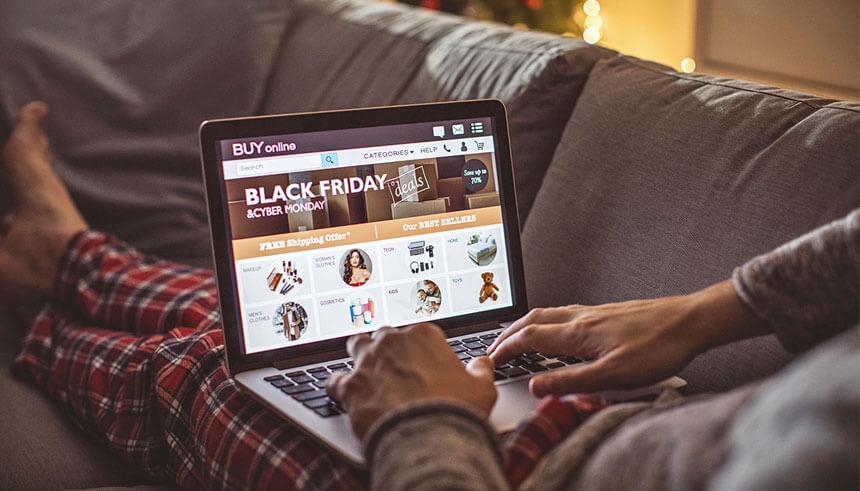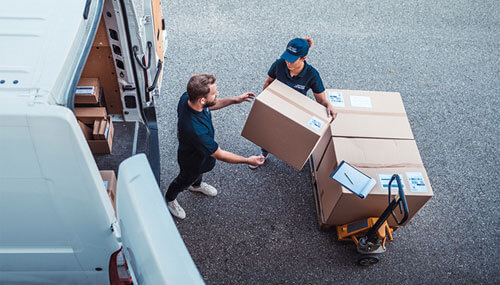Entrepreneur Insight
How to Plan for Online Holiday Shopping in a Pandemic and Beyond
By Angela Bao

From upgrading logistics, to utilizing automated texts, here are some tips to help your business during peak e-commerce season.
The COVID-19 pandemic has already driven up the rate of online shopping, but the holiday season means an even greater increase in online orders. Businesses need to boost their digital and shipping capabilities if they want to leverage the holiday boom to the full extent.
However, the benefits of upgrading your logistics and digital presence extend far beyond just the year-end holiday season—it will help your business thrive in the new normal. According to a study done by Salesforce, 58% percent of consumers planned on doing more online shopping after the pandemic than before; in 2020, consumers interacted with companies online 60% of the time, compared to just 42% in 2019. The consumer shifts seen during the pandemic are expected to be long-lasting.
“I think the expectations and the consumer behaviors have changed forever, so we're leaning into that space,” Kym Kyker, director of sales at FedEx, said in a webinar. “We're just going to assume that we're going to have these volumes that are going to continue into the new year and beyond.”
Here are tips for how your business can flourish this holiday season and in a post-pandemic world.
Use convenient and flexible access points
One of the ways you can differentiate your business from your competitors is by using convenient access points for customers to pick up and drop off purchases.
Kyker uses Amazon as an example. The e-commerce giant launched its Amazon Locker program in 2011 in grocery stores and pharmacies, which has since expanded to locations in over 900 cities. Designed like self-serve PO boxes, the Lockers were safe and convenient ways for customers to pick up or return their Amazon purchases without having to worry about theft or being home to receive packages. Amazon also partnered with retailer Kohl’s, which accepts Amazon returns at all of its store locations.
“There's a reason that they purchased Whole Foods, there's a reason they partner with Kohl's, there's a reason they have all of these brick-and-mortar facilities,” says Kyker. “It's access for pickup or drop off. This is how they leverage their brand, and how they create value to their consumer.”
But you don’t have to be Amazon to utilize access points. Kyker says that both FedEx and UPS have thousands of access points in the U.S., such as at your local Walgreens or CVS, where customers can easily pick up and drop off packages.
“When you think about delivering to these locations…you can help to get your product to the consumer in a more meaningful way,” notes Kyker. “So, if you can divert packages into these locations, you have now created something convenient for your customer. But also, you are getting faster delivery because all of these locations are classified as commercial deliveries.”
Kyker adds that tools like FedEx’s Delivery Manager or UPS’s My Choice also allow customers to change the shipping destination of their packages.
“As the package is coming in, you may have a consumer that says, ‘Oh my gosh, I'm going on vacation,’ or ‘I've had an emergency, and I know my package is coming but I need help,’” she says. “This gives them with the ability to change that destination and say, hey, could you hold it at Walgreens, could you hold it at Kroger or CVS, until I get back. So again, those options are going to make you more valuable to the consumer.”
“When you think about delivering to [convenient access points]…you can help to get your product to the consumer in a more meaningful way…But also, you are getting faster delivery because all of these locations are classified as commercial deliveries.”

Cut costs with freight shipping
For businesses that need to deliver heavy or bulky items, using freight delivery options can help them cut down on costs, while making it more convenient for the customer.
During peak season, oversized packages (which Kyker defines as packages that exceed 96 inches in length, or 130 inches in length and girth) can cost hundreds of dollars to ship, and unauthorized packages (which are bulky and heavy packages that require additional handling) can cost well over $1,000 on average. “So, that is where we got to have a tipping point, that we got to look at something else,” she says. “These freight options are available and can be cost effective.”
Kyker recommends a number of freight companies that provide customizable solutions, such as XPO Logistics, R&L Carriers, Pilot Freight Services and Old Dominion, as well as FedEx and UPS.
Embrace returns to build customer loyalty
Although it may seem counterintuitive, allowing customers to easily return purchases is a key method of building loyalty, especially during the pandemic when considerably fewer people are shopping in-store.
According to a 2019 Invesp survey, 92% of customers said they would shop again at a store that allows returns and 62% said they are more likely to shop online if they can return purchases in-store.

“The returns aspect is becoming more and more of a question, and more and more what consumers are looking for,” emphasizes Kyker. “Are you losing sales because your returns policy is too complicated, or you're trying to avoid it and saying don't return it to me? If you're saying don't use returns, you're saying don't buy from me, so we want you to get customers to come on board, shop and embrace returns.”
Whether it’s providing free returns, trackable SmartLabels, or just clearly stating your business’s return policy on the website, providing returns removes the stress from the consumer side of purchasing from an unfamiliar brand or product.
“Make sure that these are in there, and that you've got this really whittled down to a minimum, so that customers don't worry about that, and they just look at your brand for what it is and jump on to purchase,” Kyker recommends.
Manage customer expectations
Given how quickly things can change in the pandemic, it is important for businesses to be transparent and keep customers up-to-date with any new changes. Kyker recommends using banners on your website homepage to keep people apprised of the latest changes, COVID-related or not, but also to incorporate artificial intelligence as another key communications tool.
“I think a lot of you obviously communicate with email and text your customers, and you can see that they like that. Your customer wants to know that they're going to have a personalized experience—it is differentiating you from the big retailers,” says Kyker.
However, using employees to handle those texts can be time-consuming and keep them from performing other important tasks for your business, especially during peak season. That’s where AI tools like automated text messaging or chatbots can really come in handy. Not only can customers receive live updates about the delivery status of their purchases, these tools can even help drive sales by following up with customers who have “abandoned” their carts.
Sign up for the Reach Further Newsletter
We’ll keep you in the know about the latest US-Asia business news and trends.
Suscríbase al boletín Reach Further
Lo mantendremos informado sobre las últimas noticias y tendencias comerciales entre Estados Unidos y China.

